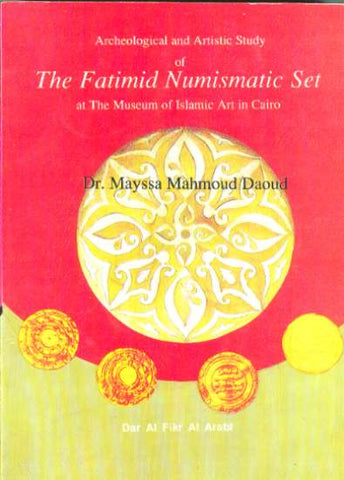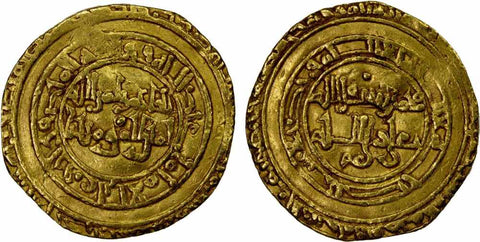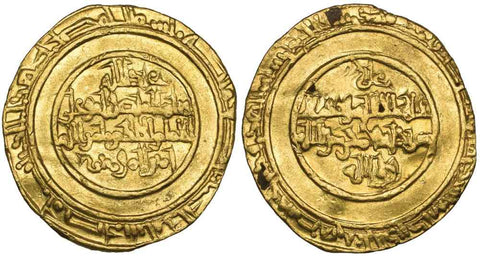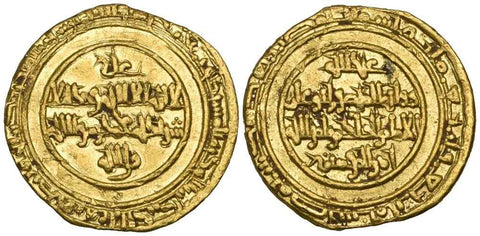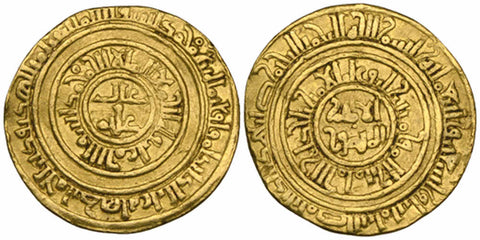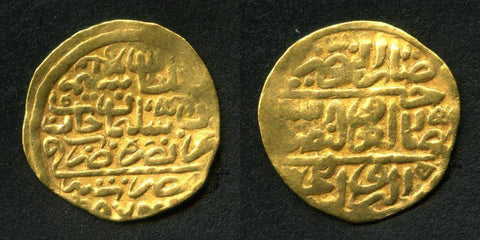
Cairo Egypt Gold Coin Ottoman Sultani 974AH - 1566 AD Selim II Son Of Suleyman The Magnificent - VF+
Description: Gold Sultani coin struck in Misr current day Fustat, which is a neighborhood on the outskirts of Cairo the current capital of Egypt. The coin was struck during the reign of the Ottoman sultan Selim II son of Suleyman the first or the magnificent (also referred to as al-Kanuni-the law giver) who ascended the throne in 1566 AD (974 AH). The coin was struck in the period 1566-1574 AD (974-982 AH). The coin clearly shows the date as 974 AH. The year 974 AH is Selim's accession date to the throne. Ottoman coins at that time used such a date for most coins struck during a sultan's reign and did not have the actual year of striking indicated. It also clearly shows the mint as Misr current day Cairo Egypt. The obverse of the coin has the words "Sultan Selim ibn Suleyman Khan Ezat Nasruh Duriba Fee Misr Sanat 974" (literally translated as The Sultan Selim son of Suleyman khan, may his glory be holy, struck in Egypt in the year 974). The reverse reads "Darib al-Nadr Sahib al-Ezz wa al-Nasr fee al-Bar wa al-Bahr." The coin has a beautiful, bold and has a well centered strike and displays nice calligraphy. the coin has minor areas of strike weakness which can be seen in the scan. Please carefully review the scan presented as it is part and parcel of our description.
Date: Marked 974 AH or 1566 AD.
Mint: Cairo, Egypt.
Size and Weight: This is a sultani, weighs 3.442 grams and is about 20 mm in diameter.
References: It is Album 1324, is listed in Kazan as 770, listed in Mitchiner as 1257 and is listed in Lane Poole's Catalog of the Khedivial Collection as 1650-1652.
Condition: I would grade this coin as beautiful good very fine with some areas of strike weakness but still having a well centered, bold strike. The calligraphy is very readable and is all there. This is a quality coin worthy of a spot in your Islamic coin collection. Please see photo to appreciate the quality and condition of this beautiful coin.
Historic Perspective: Unlike prior Islamic coins struck in Egypt, Ottoman coins do not have long praying sentences. They contain the name of the Sultan and his father's, name of the mint, the accession date for the Sultan, and a short wishful sentence such as "khullide mulkehu (may his rule be permanent)" or "azzet nasrehu (may his glory be holy)".
The Ottoman Empire existed from 699 AH (1300 AD) till 1341AH (1924 AD). In the beginning, the Ottoman state struck only silver coins known as Akce until the reign of Muhammad II (Mehmet the conqueror). On May 29, 1453, Mehmet II conquered Constantinople, the capital city of the Byzantine Empire. He made it the capital of the Ottoman State and called in Konstantiniye or Qustantinya (current day Istanbul). In 1478 he began striking Gold coins known as Sultani (also known as Dinar, Ashrafi, Funduk, or Altin). He based it on the Venetian ducat standard of 3.5 gram of high purity gold (over 21K).
Egypt was conquered by Selim I in 1517 AD (921 AH) and the mamluk rule was ended. Selim I, began striking coins in Cairo and used the mint name "MISR" on the coins. Although the Ottoman were the official rulers of Egypt the mamluks still wheeled quite a bit of power until Mohammad Ali massacred the last of them at the Cairo Citadel in the early 1800's.
The Ottoman empire reached the height of its power under Sulayman I the Magnificent, with territory extending across north Africa and through the Balkans into Hungary. Coins were struck in more than forty mints spread throughout the empire. Sulayman was distinguished for his justice and tolerance. His military, educational, and legal reforms earned him the name Sulayman the Lawgiver (al-Kanuni) among Muslims. He was fond of pomp and splendor and was a lavish patron of the arts and of literature.
The later years of Sulayman's reign were marred by family disputes over the succession. His favorite wife, Roxelana (or Khurema) intrigued against his eldest son, Mustafa, on behalf of her two sons, Selim and Beyazid. Mustafa built up his own faction, which seemed a threat to Sulayman. In 1553, Sulayman had him executed. Upon Roxelana's death, Selim and Beyazid quarreled. Beyazid rose in revolt, met defeat, and fled to Persia. The shah of Persia was induced to return him for a large sum, and Beyazid was executed. Selim succeeded Sulayman as Selim II. He was the first Sultan devoid of active military interest and willing to abandon power to his ministers, provided he was left free to pursue his orgies and debauches. Therefore, he became known as Selim the Drunkard.

